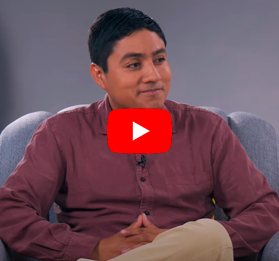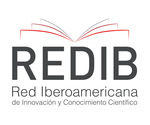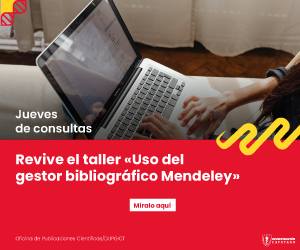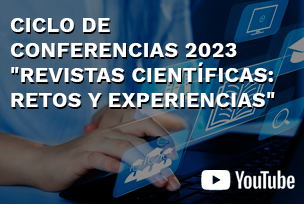Fragility and risk of falls in low-income elderly adults, Lima 2021
DOI:
https://doi.org/10.20453/rhr.v5i1.4256Keywords:
Mobility limitation, walking speed, poverty, COVID-19Abstract
Fragility is the decrease in physiological reserves, generates a state of exacerbated vulnerability and is closely related to harmful situations such as institutionalization, disabilities and falls; It is also an important predictor of mortality. Objective: To determine the relationship between frailty and risk of falls in the elderly of the solidarity dining room of the Basilica of San Francisco, Lima 2021. Material and Methods: Non-experimental cross-sectional descriptive study; It was carried out during the COVID 19 pandemic. Accessible population of 102 older adults between men and women who are homeless and who lost their jobs due to staff cuts in times of pandemic. People of both sexes aged 60 or over who signed the informed consent were included. People with disabilities that alter gait and respiratory infection less than three months (COVID 19) were excluded. Non-probabilistic sampling for convenience. The Fried phenotype, the Body Mass Index and the modified Tinetti scale were used. The descriptive results were expressed in absolute and relative frequencies and presented in tables; The chi-square test was used with a significance of 5% for the analytical results, which were presented in contingency tables. The data collected was processed in the statistical software SPSS 25. The project was approved by the Ethics Committee of the Universidad Nacional Federico Villarreal. Results: Unintentional weight loss was the most frequent frailty criterion in the study population; 31% reported being unemployed due to the pandemic; (p=0.004) significantly relates age with frailty. Conclusion: There is a significant relationship between frailty criteria and the risk of falls, there is a significant relationship between frailty and age, but not between frailty and sex.
Downloads
References
Cheng MH, Chang SF. Frailty as a Risk Factor for Falls Among Community Dwelling People: Evidence From a Meta-Analysis. J Nurs Scholarsh Off Publ Sigma Theta Tau Int Honor Soc Nurs. 2017;49(5):529-36.
Doody P, Asamane EA, Aunger JA, et al. The prevalence of frailty and pre-frailty among geriatric hospital inpatients and its association with economic prosperity and healthcare expenditure: A systematic review and meta-analysis of 467,779 geriatric hospital inpatients. Ageing Res Rev. 2022;80:101666.
Varela-Pinedo L, Ortiz-Saavedra PJ, Chávez-Jimeno H. Síndrome de fragilidad en adultos mayores de la comunidad de lima metropolitana. Rev Soc Peru Med Interna. 2008;21(1):11-5.
Presidencia del Consejo de Ministros. Decreto Supremo que declara Estado de Emergencia Nacional por las graves circunstancias que afectan la vida de la Nación a consecuencia del brote del COVID-19-DECRETO SUPREMO-N° 044-2020-PCM. Lima: Presidencia del Consejo de Ministros; 2020.
Instituto Nacional de Estadística e Informática. Perú: Estimaciones y Proyecciones de la Población Nacional, 1950 – 2070 Lima: Instituto Nacional de Estadística e Informática; 2020.
Fried LP, Tangen CM, Walston J, et al. Frailty in Older Adults: Evidence for a Phenotype. J Gerontol Ser A. 2001;56(3):M146-57.
Mitnitski AB, Mogilner AJ, Rockwood K. Accumulation of deficits as a proxy measure of aging. Scientific World Journal. 2001;1:323-36.
Wong CH, Weiss D, Sourial N, et al. Frailty and its association with disability and comorbidity in a community-dwelling sample of seniors in Montreal: a cross-sectional study. Aging Clin Exp Res. 2010;22(1):54-62.
Organización Mundial de la Salud. Caídas. Ginebra: Organización Mundial de la Salud. 2019. (Citado 17 de abril de 2022). Disponible en: https://www.who.int/es/news-room/fact-sheets/detail/falls
Inouye SK, Studenski S, Tinetti ME, Kuchel GA. Geriatric syndromes: clinical, research, and policy implications of a core geriatric concept. J Am Geriatr Soc. 2007; 55(5):780-91.
Auais M, Alvarado B, Guerra R, , et al. Fear of falling and its association with life-space mobility of older adults: a cross-sectional analysis using data from five international sites. Age Ageing. 2017;46(3):459-65.
World Health Organization. WHO global report on falls prevention in older age. Ginebra: World Health Organization; 2008.
Radloff LS. The CES-D Scale: A self-report depression scale for research in the general population. Applied Psychological Measurement. 1977; 1(3): 385–401. Doi: 10.1177/0146621677001003061977
Altuna-Venegas S, Aliaga-Vega R, Maguiña JL, Parodi JF, Runzer-Colmenares FM. Risk of community-acquired pneumonia in older adults with sarcopenia of a hospital from Callao, Peru 2010-2015. Arch Gerontol Geriatr. 2019;82:100-5.
Palacios-Chávez M, Dejo-Seminario C, Mayta-Tristán P. Rendimiento físico y fuerza muscular en pacientes adultos mayores con diabetes y sin diabetes de un hospital público de Lima (Perú). Endocrinol Nutr. 2016;63(5):220-9.
Montero-Odasso M, Schapira M, et al. Gait velocity as a single predictor of adverse events in healthy seniors aged 75 years and older. J Gerontol A Biol Sci Med Sci. 2005; 60(10): 1304-9.
Varela LF, Ortiz S PJ, Chavez HA. Velocidad de la marcha en adultos mayores de la comunidad en Lima, Perú. Rev Medica Hered. 2009;20(3):133-8.
Parraguez AC. Nivel de actividad física en la vida cotidiana del adulto mayor que acude al Club del Adulto Mayor del Centro de Salud Leonor Saavedra -SJM octubre – 2016. Tesis de Licenciatura en Enfermeria. Lima: Universidad Privada San Juan Bautista; 2017
Jara PA. Efectos de un programa fisioterapéutico de equilibrio estato-dinámico para disminuir el riesgo de caídas en adultas mayores, Policlínico PNP Carabayllo 2018. Tesis de Grado. Lima: Universidad Cesar Vallejo; 2019
Downloads
Published
How to Cite
Issue
Section
License
All articles published in the Revista Herediana de Rehabilitación are under a Creative Commons Reconocimiento 4.0 International license.
The authors retain the copyright and grant the journal the right of first publication, with the work registered with the Creative Commons License, which allows third parties to use what is published whenever they mention the authorship of the work, and to the first publication in this magazine.
Authors can make other independent and additional contractual agreements for the non-exclusive distribution of the version published in this journal, provided they clearly indicate that the work was published in this journal.
The authors can file in the repository of their institution:
The research work or thesis of degree from which the published article derives.
The pre-print version: the version prior to peer review.
The Post-print version: final version after peer review.
The definitive version or final version created by the publisher for publication.











 Esta obra está bajo una
Esta obra está bajo una 